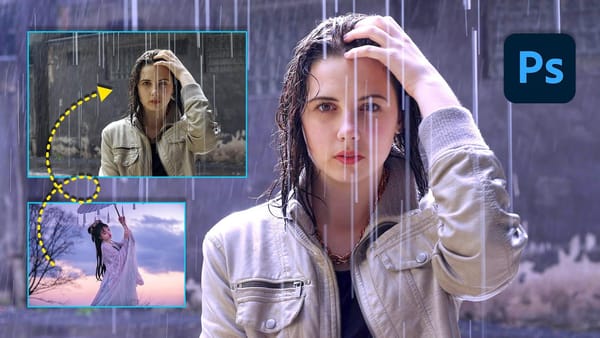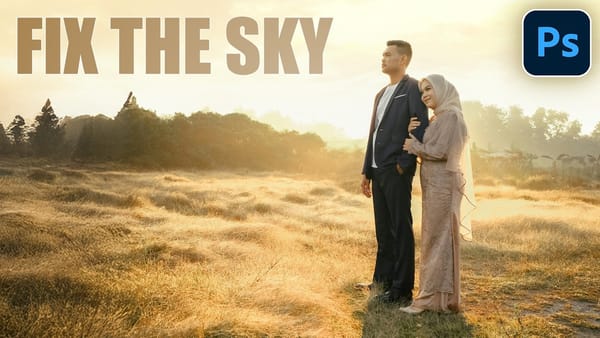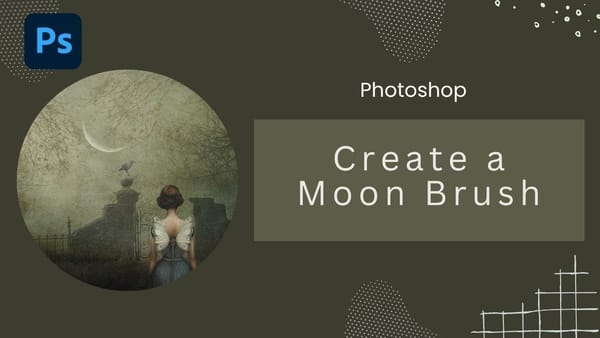Over the past few years, Adobe has been strategically integrating AI-powered features that are redefining what's possible in image editing, positioning Photoshop at the forefront of the generative AI revolution.
Rather than simply adding standalone AI tools, Adobe is thoughtfully weaving intelligence into Photoshop's core workflows, creating something far more sophisticated than the typical AI feature additions we see elsewhere. But here's the challenge: having all these options doesn't automatically make your workflow faster—especially when you're standing there wondering which tool to use for your specific situation.
This guide focuses on the strategic decisions you face when working with Photoshop. It's organized into sections that cover the most common tasks in your workflow and which AI tools can help with each one:
- Object removal strategy - Which AI tool to use when you need to get rid of something
- Content creation strategy - How to choose between different ways of adding new elements
- Enhancement and upscaling - When to use each AI tool for improving image quality
- Advanced control features - Tools that give you more precise control over AI results
- Workflow optimization - How to combine tools and manage your overall process
Each section follows the same framework to help you make quick decisions about which AI tool will give you the best results, and more importantly, when to switch to something else.
What is Photoshop Beta and Why You Should Consider Installing It
Throughout this guide, you'll see some tools that require Photoshop Beta to access. Here's what you should know: the most powerful AI features aren't in regular Photoshop yet—they're in the Beta version. Think of Beta as Adobe's testing ground where new tools get refined before joining the main app. You can install both versions side by side at no extra cost through Creative Cloud.
This matters because the Beta version gives you access to tools like Generative Workspace, advanced Harmonize capabilities, and the latest Firefly improvements months before everyone else gets them. Yes, these newer features can be slightly less polished, but they're stable enough for real work. You're essentially getting a sneak peek at upcoming Photoshop features.
Video by PANTER. Any links or downloads mentioned by the creator are available only on YouTube
Section 1: Object Removal Strategy
✅ Remove Tool (One-Click Distractions)
The newest addition to the Remove Tool is almost magical—it can spot and eliminate common distractions with just one click. Hit "Find Distractions" in the options bar, and Photoshop scans your image for things like power lines, cables, or random people in the background. One click removes them all at once, with AI smartly filling in the gaps.
Best for:
- Power lines and cables ruining your architectural shots
- Random people photobombing your tourist photos
- Small scattered junk cluttering up an otherwise perfect image
- When you need quick cleanup and don't want to fiddle with selections
When to use a different tool: The automatic detection isn't perfect—sometimes it misses things or tries to remove stuff you want to keep. You'll need manual alternatives when dealing with complex objects or when you want creative control over replacement content.
Video by Photoshop Cafe. Any links or downloads mentioned by the creator are available only on YouTube
✅ Remove Tool (Manual Brush Mode)
When the one-click magic isn't quite right, the manual brush mode lets you paint over exactly what you want gone. You brush over unwanted stuff, and the AI figures out how to fill the space by looking at what's around it. It's especially good with tricky edges and organic shapes that would be a nightmare to select manually.
Best for:
- Objects with messy, irregular edges like tree branches or flowing hair
- Removing things that partially overlap with stuff you want to keep
- When you need to be picky about exactly which parts of something disappear
- Cleanup work where the old Content-Aware Fill just wasn't cutting it
When to use a different tool: For massive objects, Generative Fill with text prompts gives you creative control over replacements. For precise control over sampling areas, use Content-Aware Fill workspace.
Video by Photoshop Essentials. Any links or downloads mentioned by the creator are available only on YouTube
✅ Content-Aware Fill Workspace
This is the old-school, manual approach to object removal that gives you complete control over where Photoshop samples replacement pixels, lets you exclude certain areas, and shows live previews of results. It's slower than AI options but delivers predictable, repeatable results.
Best for:
- Professional workflows that require non-AI solutions
- When you absolutely need to control where replacement pixels come from
- Complex backgrounds that need careful, manual sampling area adjustments
- Situations where consistent, predictable results matter more than speed
When to use a different tool: Most modern work benefits from AI-powered alternatives that give better results with way less effort. Try the AI options first unless you specifically need manual control.
Video by Phlearn. Any links or downloads mentioned by the creator are available only on YouTube
Section 2: Content Creation Strategy
✅ Generative Fill for Adding Objects
When you need to add new stuff to existing photos, this is where Generative Fill really shines. Unlike creating images from scratch, this tool understands your existing photo's lighting, perspective, and overall vibe, creating new objects that look like they actually belong in the scene with automatic shadows, reflections, and color matching.
Best for:
- Adding objects that need to look naturally placed in existing scenes
- Product placement in lifestyle photography
- Creative compositing where new objects need proper lighting and shadows
- Filling empty spaces with content that actually fits the mood
When to use a different tool: When you need standalone elements for later compositing, Generate Image creates objects without scene-specific lighting. For complete background changes, Generate Background works better than adding individual pieces.
Video by Brendan Williams. Any links or downloads mentioned by the creator are available only on YouTube
✅ Generate Image (Text-to-Image)
This puts a complete AI image generator right inside Photoshop. You describe what you want, and it creates entire images from scratch using the latest AI models, giving you standalone content for source material, inspiration, or finished artwork without jumping between different apps.
Best for:
- Creating standalone elements for compositing projects
- Generating multiple concept variations for client presentations
- Starting points for creative projects when you need inspiration
- Creating assets when photography isn't available or practical
When to use a different tool: When you need objects that match existing scene lighting and perspective, Generative Fill works better. For background replacement specifically, Generate Background is more targeted.
Video by Anthony Morganti. Any links or downloads mentioned by the creator are available only on YouTube
✅ Generate Background
This tool specializes in swapping out everything behind your subject with AI-generated environments that match your creative vision. It automatically figures out the edges around your subject and creates backgrounds with appropriate depth, lighting, and perspective, streamlining workflows that used to require careful masking and tedious compositing work.
Best for:
- Product photography that needs clean, professional backgrounds
- Portrait work where environmental changes enhance the story
- E-commerce photography requiring consistent background treatments
- Quick background swaps without manual masking headaches
When to use a different tool: For adding specific objects rather than complete environmental changes, Generative Fill gives you more targeted control. Consider alternatives when your subject has really complex edges that automatic detection struggles with.
Video by Phlearn. Any links or downloads mentioned by the creator are available only on YouTube
✅ Generative Expand
This solves the annoying problem of images that don't fit your desired aspect ratio or need more space for design elements. Instead of cropping or awkwardly stretching, the tool intelligently continues your image beyond its original borders, keeping everything looking natural while adding content that feels like it was always part of the original shot.
Best for:
- Extending images to fit different aspect ratios for social media
- Creating breathing room for text or design elements
- Fixing compositions that feel too cramped or tightly cropped
- Adapting existing images for different format requirements
When to use a different tool: When you need specific content in the expanded areas, Generative Fill with descriptive prompts gives you more creative control. For simple canvas extensions where you'll add your own content, traditional canvas expansion might be more efficient.
Video by Phlearn. Any links or downloads mentioned by the creator are available only on YouTube
✅ Generate Similar
This takes existing AI-generated results and creates variations while keeping the core elements that made the original work. Instead of starting over when you almost love a generated result, this tool uses your selected result as a launching pad for creating new versions with controlled variations.
Best for:
- Fine-tuning AI results that are close but not quite perfect
- Creating multiple variations while keeping consistent style
- Batch content creation with controlled variation
- Exploring creative directions based on successful results
When to use a different tool: When you need completely different content or want to explore entirely new creative directions, starting fresh with Generate Image gives you more creative freedom. For minor adjustments to existing results, traditional editing tools might be more precise.
Video by Photoshop Essentials. Any links or downloads mentioned by the creator are available only on YouTube
Section 3: Enhancement & Upscaling Strategy
✅ Generative Upscale (Beta)
This represents a major breakthrough in making images bigger without them looking terrible. Instead of just stretching existing pixels, the AI actually recreates detail and sharpness when increasing resolution up to 4x the original size, with output up to 8 megapixels total.
Best for:
- Preparing web-resolution images for print production
- Enhancing old family photos that don't have enough resolution
- Upscaling product images for large-format displays
- Recovering detail in low-resolution source material
When to use a different tool: When your source resolution is already adequate, traditional resizing is faster and doesn't use generative credits. For images exceeding the 8MP output limit, you'll need alternative upscaling solutions.
Video by Anthony Morganti. Any links or downloads mentioned by the creator are available only on YouTube
✅ Neural Filters: Portrait Enhancement
These are AI-powered portrait tools designed specifically for human faces. They can smooth skin, adjust facial expressions, modify apparent age, change where someone's looking, and even alter lighting direction, with specialized filters like Skin Smoothing and Smart Portrait that excel at batch processing while keeping results natural.
Best for:
- Skin smoothing across multiple portrait images
- Age progression or regression effects for creative projects
- Expression adjustments when you need subtle mood changes
- Batch processing wedding or event photography
When to use a different tool: For highly detailed portrait retouching work, traditional manual techniques give you more precise control. When working with non-human subjects, general enhancement tools work better than face-specific filters.
Video by UCD Professional Academy. Any links or downloads mentioned by the creator are available only on YouTube
✅ Neural Filters: Photo Restoration
These tackle common problems in older photographs: adding realistic color to black and white images, removing dust and scratches, reducing noise, and improving overall image quality. The filters include Colorize, Photo Restoration for age-related damage, and various noise reduction options, each designed to handle specific photographic problems.
Best for:
- Colorizing black and white family photographs
- Removing age-related damage from scanned photos
- Noise reduction in high-ISO digital photography
- Quick restoration of multiple damaged photos
When to use a different tool: For professional archival work requiring complete manual control and documentation, traditional restoration techniques provide more accountability. Consider alternatives when restoration quality needs to meet museum or archival standards.
Video by Adobe Photoshop. Any links or downloads mentioned by the creator are available only on YouTube
✅ Harmonize (Beta)
This solves one of the trickiest parts of composite work: making new elements actually look like they belong in existing scenes. This Beta feature automatically adjusts the lighting, color temperature, shadows, and overall tone of new objects to match your scene's visual characteristics, eliminating the manual work typically required to make composite elements look believable.
Best for:
- Blending product images into lifestyle photography
- Architectural visualization with furniture placement
- Composite work requiring seamless element integration
- Matching lighting conditions between different source images
When to use a different tool: For creative composites where you want elements to stand out rather than blend naturally, manual control over lighting and color gives you more artistic flexibility.
Video by PiXimperfect. Any links or downloads mentioned by the creator are available only on YouTube
Section 4: Advanced Control Features
✅ Reference Image
This gives you visual control over AI generation by letting you upload example images that guide the style, composition, or content of your generated results. Instead of wrestling with text prompts, you can show the AI exactly what visual characteristics you're after, getting more predictable and consistent results across various generative features.
Best for:
- Maintaining consistent visual style across multiple projects
- Brand work requiring specific aesthetic guidelines
- Getting more predictable results from generative tools
- Complex visual concepts that are hard to describe in words
When to use a different tool: When you want to explore completely new creative directions without visual constraints, text-only prompting allows for more unexpected results. For simple content generation, additional reference images might overcomplicate things.
Video by Phlearn Any links or downloads mentioned by the creator are available only on YouTube
✅ Generative Workspace (Beta)
This transforms how you approach AI content creation by letting you generate multiple concepts at the same time, organize results efficiently, and iterate on ideas without waiting for each generation to finish. The workspace lets you queue multiple generation requests, explore different prompts simultaneously, and curate results with automatic organization and searchable history.
Best for:
- Brainstorming multiple creative concepts simultaneously
- Managing large-scale AI asset creation projects
- Collaborative work requiring organized AI-generated content
- Systematic exploration of creative variations
When to use a different tool: For single, targeted AI generations where you know exactly what you want, the standard interface is more streamlined. When you're watching your generative credits, the regular tools provide more controlled consumption.
Video by Phlearn Any links or downloads mentioned by the creator are available only on YouTube
Section 5: Workflow-Based Decisions
✅ Speed vs Quality Trade-offs
Your project timeline significantly influences which AI tools you should reach for. When you're racing against a deadline, certain tools deliver faster results with minimal setup, while quality-focused workflows may require combining multiple tools and manual refinement.
When you need maximum speed: Use the Remove Tool's one-click distractions instead of fiddling with Content-Aware Fill. Choose Generate Background over the tedious process of manual masking combined with Generative Fill. Leverage Neural Filters for batch portrait processing instead of retouching each image individually.
When quality is your main concern: Combine multiple AI tools in sequence—generate initial content, then use Harmonize for seamless integration. Use Reference Image to ensure consistent, predictable results rather than crossing your fingers with text prompts alone. Plan for manual fine-tuning after AI processing to achieve professional-grade results.
✅ Managing Generative Credits
Understanding which tools consume generative credits and how to use them strategically can make a huge difference in your workflow efficiency and budget management.
High credit consumption tools: Generate Image, Generative Fill with complex prompts, Generative Upscale, and extensive use of Generate Similar require careful management of your monthly allocation.
Low or no credit consumption: Remove Tool operations, basic Neural Filters, and traditional Content-Aware Fill preserve your generative credits for high-impact uses.
Strategic approach: Reserve high-credit tools for hero images and critical creative work. Use efficient alternatives for bulk processing and routine tasks. Keep the traditional tools as backups when credits run low.
Video by Gary Dufner Any links or downloads mentioned by the creator are available only on YouTube
✅ Commercial vs Personal Project Considerations
Your project's intended use affects which tools and approaches you should choose, particularly regarding licensing, documentation, and quality standards.
For commercial projects: Firefly-generated content is commercially safe and indemnified by Adobe. Document your AI usage for client transparency and future reference. Be aware that some Beta features may have different licensing terms than released features.
For personal projects: Experiment freely with Beta features and cutting-edge capabilities. Combine traditional and AI techniques without commercial constraints. Use personal projects as learning opportunities to understand each tool's capabilities and limitations.
Video by Aura Any links or downloads mentioned by the creator are available only on YouTube
Conclusion
Don't worry about learning every AI tool in Photoshop—focus on understanding which one to use when. Start with the fastest, easiest options first, and only move to more complex tools when you need better results. The real power comes from combining different AI tools together, not just using one at a time.
These AI tools are incredibly powerful, but they all have situations where they work great and situations where they don't. Use this guide to help you choose, but trust your own judgment about what looks good for your project. The best approach isn't picking AI over traditional tools or vice versa—it's using both together to get results you couldn't achieve with either approach alone.
Now go create something amazing!











